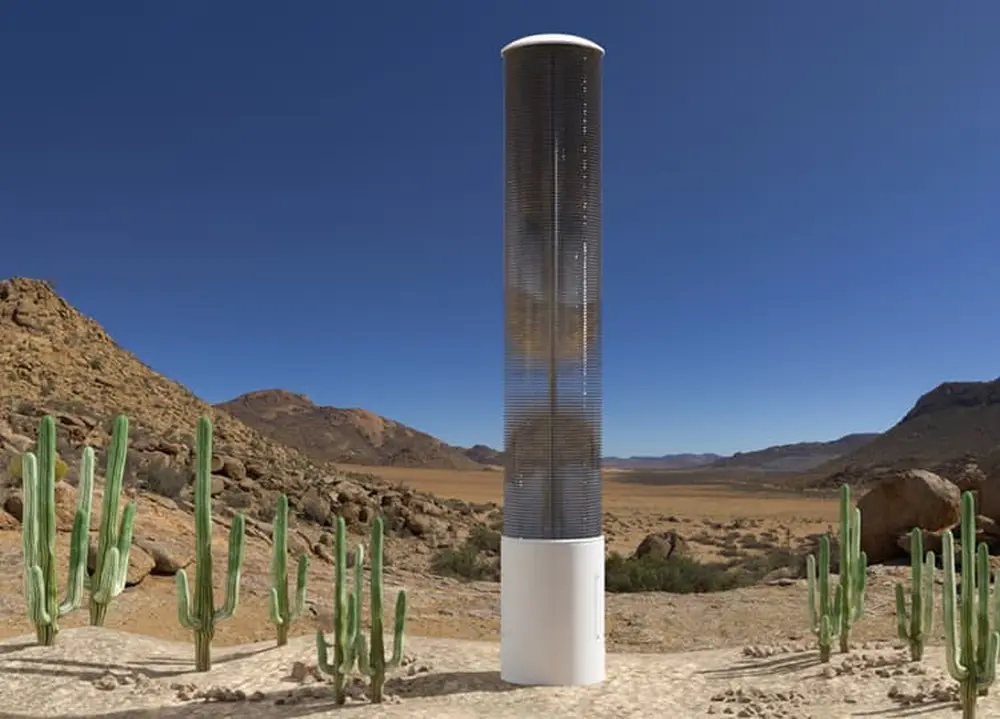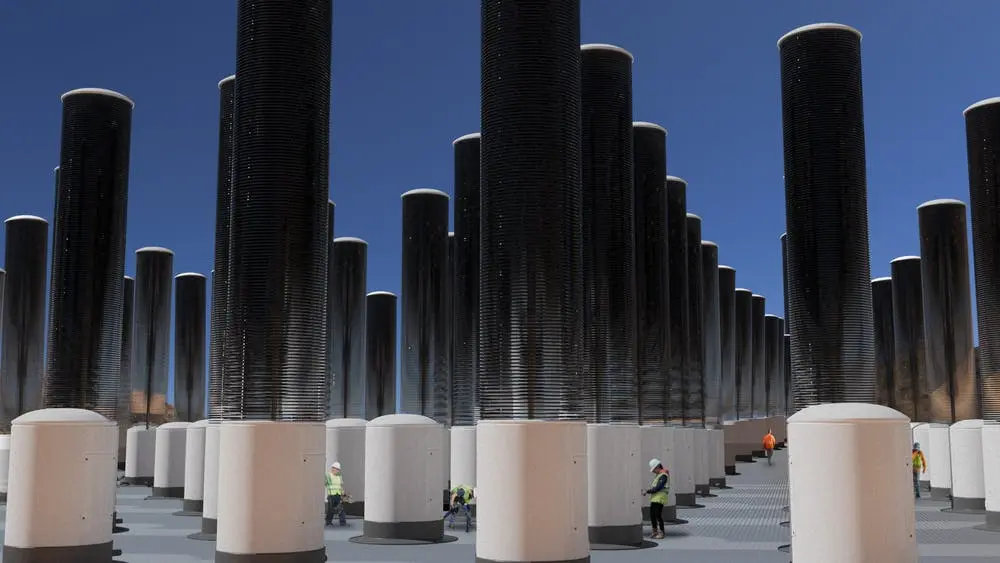Carbon Collect’s MechanicalTree Removes CO2 1000 Times Faster Than Real Ones
Created by Carbon Collect, this significant invention is scalable and energy efficient and can help tremendously in removing atmospheric carbon
Presented as a key solution for business and lawmakers working toward carbon mitigation and achieving carbon neutral targets through technological removal of carbon dioxide, Carbon Collect has created MechanicalTree that removes atmospheric CO2 1000 times faster than live trees.
The innovative MechanicalTrees can be installed to capture current and historical emissions for permanent removal through sequestration. The device is installed onsite and can provide a source of green CO2 for various usages such as in the food industry, industrial applications and construction, which could replace CO2 manufactured from fossil fuels.

Image: Carbon Collect
In a partnership with Arizona State University (ASU), Carbon Collect’s technology relies on the latest innovations of Dr. Klaus Lackner and his team at the Center for Negative Carbon Emissions at ASU. Apparently, MechanicalTrees are a thousand times more efficient than live trees at sequestering atmospheric CO2.
Professor Klaus Lackner became the first scientist to articulate the need of removing CO2 out of the atmosphere to avert the climate crisis rather than cutting carbon emissions in 1999. He has been working on the mechanical trees for the past two decades, with the prototype about to launch on the ASU campus.
The prototype is a “concertina” column that is 10-meter-tall when fully extended and 1.5-meter—wide, with a 2.5-meter-wide base attached to the bottom. Its column holds 150 horizontal, circular discs coated with chemicals that trap CO2 when the wind blows through them.
Lackner said;
If you add up how much carbon we need to get back from the atmosphere we simply don’t have enough land to grow the trees. We are very close to having a prototype running on the campus and when we do our first job is to help us design a better, cheaper faster one for number two.

Image: Carbon Collect
If the trial succeeds, the prototype trees will fill up with CO2 every 30 to 60 minutes, when they will compress down into the drum and the CO2 will be collected and deposited or sold for use in industrial appliances. Lackner is confident that after a successful trial, he can have the first batch of mechanical trees ready for installation within a year or two, making them one billion within the following two decades, which compares to 1.2 billion cars at the moment.
Evidently, the technology will work at scale and could be affordable, but the issue of effectively disposing of such huge amounts of CO2 will pose challenges. MechanicalTree is the first step in a chain of events; and while the first step could be a huge success, subsequent phases will have to be carried out methodically and carefully or it could simply be a recipe for disaster.
Via: iNews


